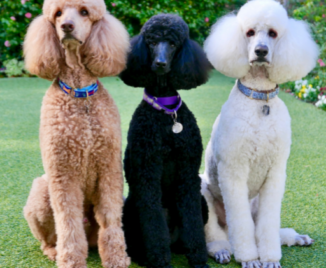Dog Training: What You Need to Know
How to Train Your Dog
Introduction
Hello fellow dog enthusiasts! In this article, I’ll guide you through the wonderful world of dog training. As a passionate dog owner and trainer, I understand the incredible benefits training can bring to your furry friend’s life. Join me on this journey as we explore the importance of training, learn effective techniques, and address common challenges. Let’s get started!
The Importance of Training
Training your dog is not just a luxury but a fundamental responsibility. Dog training provides the framework for a harmonious and fulfilling relationship between you and your canine companion. Training equips your dog with essential skills, enhances communication, and ensures their safety and well-being in various situations.
Understanding Dog Behavior
Before diving into training techniques, it’s crucial to understand how dogs learn and behave. Dogs are intelligent and social creatures with unique instincts and emotions. By gaining insight into their natural behaviors, we can tailor our training methods to effectively communicate with them.
Benefits of Training Your Dog
Dog training offers a multitude of benefits that go beyond basic obedience. Let’s explore why investing time and effort into training is worth every wag of the tail:
Enhanced Communication
Training establishes a common language between you and your dog. It allows you to convey your expectations and understand your dog’s signals, creating a stronger bond and fostering mutual understanding.
Behavioral Control
Through training, you gain control over your dog’s behavior. They learn to respond to commands promptly, helping prevent unwanted behaviors such as jumping, excessive barking, or aggression.
Mental Stimulation
Training exercises your dog’s mind, providing mental stimulation that helps prevent boredom and destructive behaviors. Engaging their intellect keeps them sharp, curious, and mentally fulfilled.
Strengthened Bond
The training process strengthens the bond between you and your dog. As you work together, trust and respect grow, deepening the emotional connection and creating a sense of teamwork and companionship.
Improved Safety
A well-trained dog is safer in various situations. They are more likely to respond to commands, which can prevent them from running into dangerous situations or approaching potentially harmful objects or animals. Training also enables you to have better control over your dog during walks, reducing the risk of accidents or confrontations with other dogs or strangers.
Getting Started with Dog Training
Now that we understand the importance of training, let’s explore how to get started:
Setting Clear Goals
Define your training goals based on your dog’s individual needs and your desired outcomes. Whether it’s basic obedience, addressing specific behavioral issues, or advanced tricks, having clear objectives will guide your training process.
Reinforcement
Utilize positive reinforcement techniques to reward and motivate your dog. Rewarding desired behaviors with treats, praise, or playtime reinforces those behaviors, making your dog more likely to repeat them.
Consistency and Patience
Consistency is key in dog training. Set a regular training schedule and stick to it. Patience is equally important, as dogs learn at their own pace. Be patient and avoid frustration, as negativity can hinder progress.
Professional Training vs. DIY
Consider whether you want to train your dog yourself or seek professional help. Professional trainers have expertise and experience in handling various training scenarios, while DIY training allows for a closer bond and deeper understanding between you and your dog.
Building a Training Routine
Establish a training routine that incorporates short, focused sessions. Consistency and repetition help reinforce behaviors. Remember to keep training sessions fun, engaging, and filled with positive interactions.
Training Techniques for Basic Commands
Now, let’s delve into some essential commands that every dog should learn:
Sit and Stay
Teaching your dog to sit and stay on command is fundamental. It establishes impulse control and helps manage their behavior in various situations.
Recall (Come)
A reliable recall command is crucial for off-leash walks or emergency situations. Training your dog to come when called ensures their safety and gives you peace of mind.
Loose Leash Walking
Walking politely on a leash is essential for enjoyable walks. Train your dog to walk without pulling, promoting a more pleasant and controlled walking experience.
Leave It
The “leave it” command prevents your dog from picking up or engaging with potentially dangerous or inappropriate objects.
Down (Lie Down)
Training your dog to lie down on command is useful for various situations, such as settling down in public places or calming excited behavior.
Addressing Behavioral Issues
Training can also help address common behavioral issues that dogs may exhibit:
Aggression
For the above article, provide me with to two links to webpages that share scientific studies or commentaries related to the content
If your dog displays aggressive behavior, consult with a professional trainer or behaviorist to assess the underlying causes and develop a behavior modification plan.
Separation Anxiety
Separation anxiety can be distressing for both dogs and their owners. Gradual desensitization, crate training, and providing mental stimulation can help alleviate this issue.
Excessive Barking
Training techniques like teaching the “quiet” command and redirecting their attention can help manage excessive barking.
Fear and Phobias
If your dog exhibits fear or phobias, positive reinforcement training combined with counterconditioning can help them become more comfortable and confident in fearful situations.
Destructive Chewing
Providing appropriate chew toys, managing your dog’s environment, and redirecting their chewing behavior can help curb destructive chewing habits.
Training Tips for Specific Situations
Here are some additional training tips for specific situations you may encounter:
Socialization
Socialize your dog from a young age, exposing them to various environments, people, and animals. Proper socialization builds confidence and helps prevent fear or aggression issues.
Training Adult Dogs
Older dogs can learn new tricks! Use positive reinforcement techniques and be patient as you introduce them to training exercises and commands.
Training Puppies
Start training your puppy as early as possible. Focus on basic obedience, socialization, and establishing good behaviors from the beginning. Keep training sessions short and fun to accommodate their short attention spans.
Training Senior Dogs
Training isn’t just for young pups! Senior dogs can benefit from mental stimulation and continued training. Adapt the training exercises to their physical capabilities and consider any age-related limitations.
Training Rescue Dogs
Rescue dogs may have unique behavioral challenges due to their past experiences. Patience, positive reinforcement, and building trust are crucial when training and rehabilitating rescue dogs. Seek professional guidance if needed.
Conclusion
Training your dog is an investment that yields a lifetime of rewards. The benefits go beyond obedience and extend to improved communication, enhanced safety, and a stronger bond. Remember to set clear goals, use positive reinforcement, be consistent, and tailor training techniques to your dog’s individual needs. With patience, dedication, and love, you can guide your dog towards becoming a well-behaved and happy companion.
FAQs
1. How long does it take to train a dog?
The duration of training varies based on factors such as the dog’s breed, age, temperament, and the complexity of the skills being taught. Consistent practice and reinforcement are key, and it’s important to understand that training is an ongoing process rather than a one-time event.
2. What if my dog doesn’t respond to training techniques?
If your dog is not responding to your training efforts, it may be beneficial to seek guidance from a professional dog trainer or behaviorist. They can assess the situation, provide expert advice, and develop a customized training plan tailored to your dog’s specific needs.
3. Can I train my dog using punishment or harsh methods?
Using positive reinforcement techniques is generally more effective and humane than relying on punishment or harsh methods. Positive reinforcement focuses on rewarding desired behaviors, creating a positive association, and strengthening the bond between you and your dog.
4. Can I train an older dog that has never been trained before?
Absolutely! Dogs of all ages can learn and benefit from training. While it may take a bit more time and patience, older dogs can still acquire new skills and behaviors. Adjust the training methods to accommodate their age and physical abilities.
5. Is it necessary to continue training after the initial training phase?
Yes, training should be an ongoing process throughout your dog’s life. Regular reinforcement and continued practice help maintain learned behaviors, introduce new commands, and address any evolving behavioral issues that may arise.
Remember, training your dog is an exciting journey filled with growth, understanding, and lots of tail-wagging moments. Enjoy the process, be patient, and celebrate every achievement along the way. Your dog will thank you with a wagging tail and a loving heart. Happy training!




